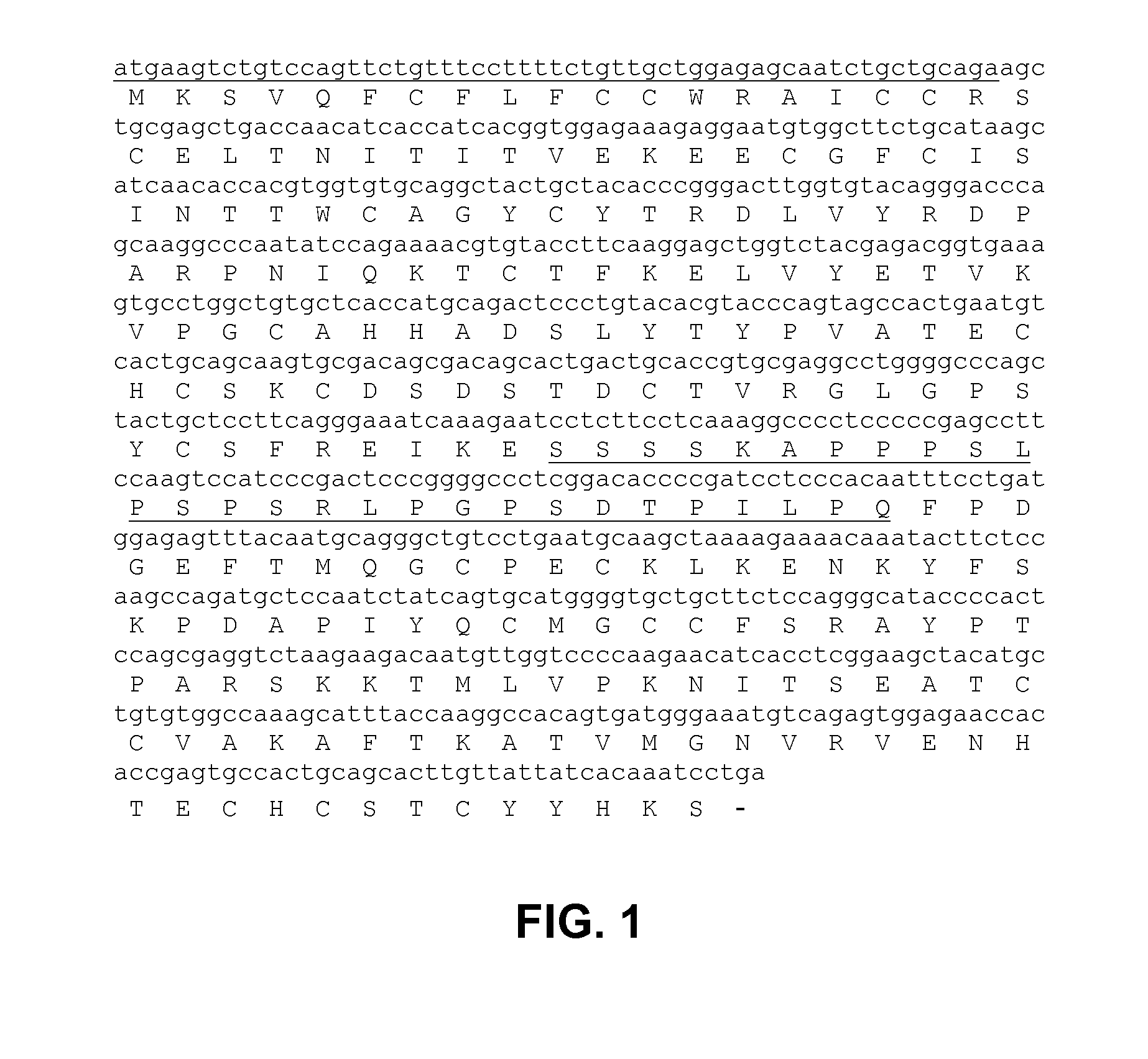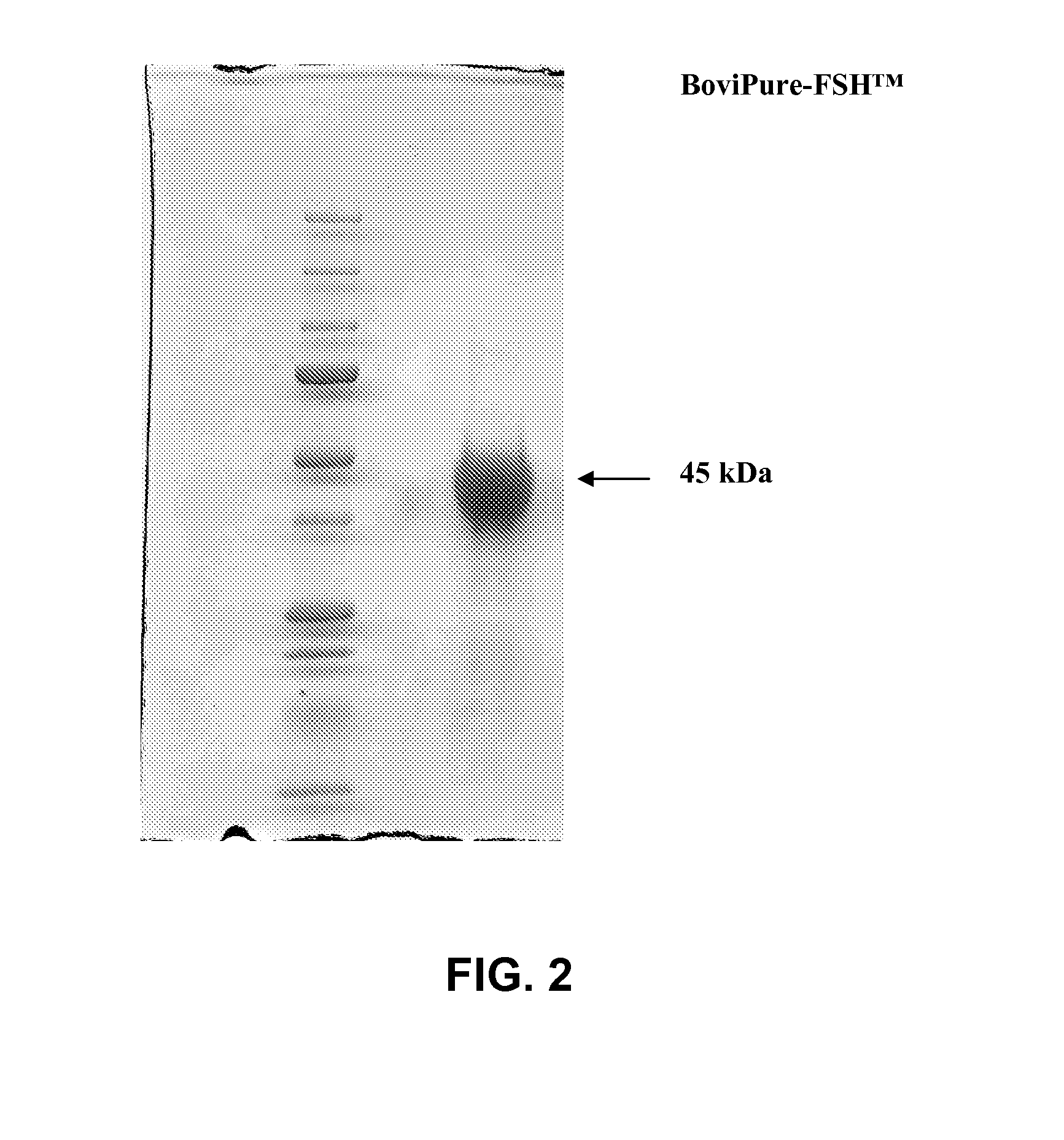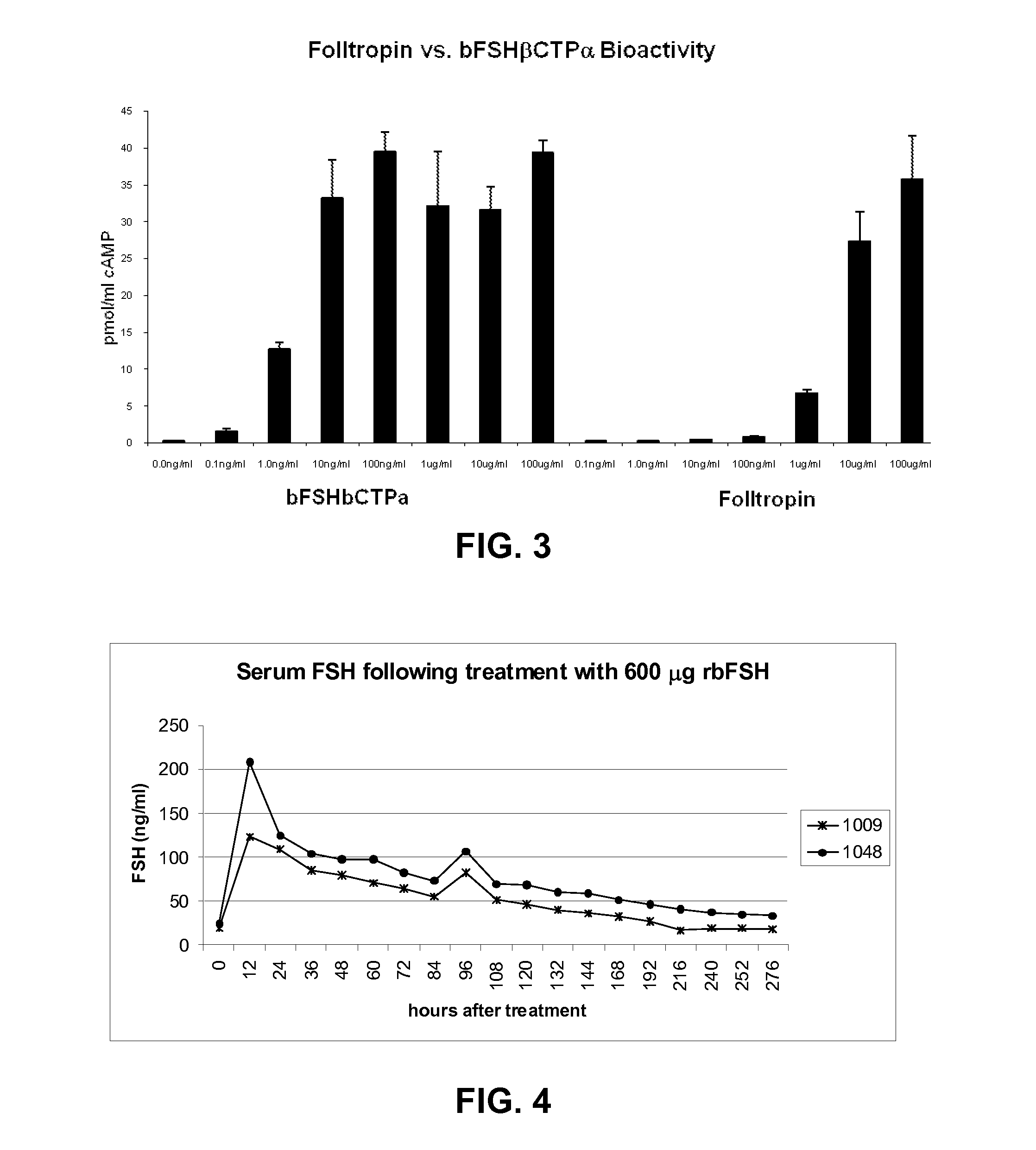Compositions and methods including expression and bioactivity of bovine follicle stimulating hormone
a technology of bovine follicle and bioactive hormone, which is applied in the field of embryo transfer, can solve the problems of decreasing reproductive performance, dairy industry cannot afford to continue the current rate of declining reproductive performance, and reducing reproductive performance, so as to avoid cross contamination issues, improve reproduction activity, and improve embryo production
- Summary
- Abstract
- Description
- Claims
- Application Information
AI Technical Summary
Benefits of technology
Problems solved by technology
Method used
Image
Examples
example 1
Engineering Single-Chain Recombinant bFSHβCTPα
[0045]The cDNA encoding bovine FSHβ subunit was amplified from bovine pituitary cDNA, which was generated using an iScript cDNA Synthesis Kit (Bio-Rad Laboratories, Hercules, Calif.). Amp was performed using Deep Vent DNA polymerase (New England Biolabs, Ipswich MA) and Techgene model FTGENE2D thermal cycler (Techne, Burlington, N.J., USA). 2 uM of each of the following primers was used in the FSHβ amplification: 5′-GTG CAT AGG ATG AAG TCT GTC C-3′ (SEQ ID NO 4) and 5′-GGC GCG TTA TTC TTT GAT TTC CC-3′ (SEQ ID NO 5). PCR conditions were as follows: initial denaturation 94° C. 5 min., cycle 1-30 denaturation 94° C. 30 sec., annealing 55° C. 30 sec., extension 72° C. 30 sec, and the final extension 72° C. 5 min. The FSHβ PCR product was cloned into PCR-Script vector (Stratagene, La Jolla, Calif.) and sequenced for verification. To construct the recombinant bFSHβCTPα single chain, a bLH template was used as one of two PCR templates for over...
example 2
Comparative Effects of bFSHβCTPα and Folltropin in Bovine
[0051]The effects of Folltropin and bFSHβCTPα on bovine were compared. In one experiment, both products are administered to the animals starting approximately 7-8 days after estrus as illustrated in FIG. 5. Prostaglandin is administered at approximately day 10 (approximately 2-3 days after the first dose of the bFSH analog) and artificial insemination occurs at about day 12 (approximately 4-6 days after administration of the bFSH analog). The embryos and ova are flushed at about day 19 (approximately 11-13 days after administration of the bFSH analog), and the respected number of viable embryos counted. Administration of both Folltropin and bFSHβCTPα result in successful embryo production and superovulation in a population of animals, however, as shown in FIG. 5, only a single dose of bFSHβCTPα is administered, while Folltropin requires a series of 8 doses over a four day period.
[0052]FIG. 6 illustrates one experiment where 0....
example 3
Comparative Effects of bFSHβCTPα Doses in Bovine
[0054]FIG. 7 and Table 2 illustrate a study where 5 cows were treated with 0.20 mg of bFSHβCTPα (labeled as FSH 200, numbers 1-5), 5 cows were treated with 0.15 mg of bFSHβCTPα (labeled as FSH 150, numbers 1-5), and 5 cows were treated with 0.10 mg of bFSHβCTPα (labeled as FSH 100, numbers 1-5). As illustrated in FIG. 7, the animals are administered bFSHβCTPα 7-8 days after estrus, and artificial insemination occurs 13 days after estrus. Two doses of prostaglandin are administered on day 11. As a control, 5 angus beef cows were treated with Folltropin (labeled as Folltropin, numbers 1-5). The number of recovered ova and viable embryos for each of these groups are shown in Table 2.
TABLE 2Total OvaViableCow IDRecoveredEmbryosFolltropin 1no heatFolltropin 265Folltropin 366Folltropin 42818Folltropin 51813Subtotals5842Averages14.510.5FSH 200 1122FSH 200 21514FSH 200 3no heatFSH 200 4overstimno flushFSH 200 5538Subtotals8024Averages26.78.0FS...
PUM
| Property | Measurement | Unit |
|---|---|---|
| Fraction | aaaaa | aaaaa |
| Fraction | aaaaa | aaaaa |
| Time | aaaaa | aaaaa |
Abstract
Description
Claims
Application Information
 Login to View More
Login to View More - R&D
- Intellectual Property
- Life Sciences
- Materials
- Tech Scout
- Unparalleled Data Quality
- Higher Quality Content
- 60% Fewer Hallucinations
Browse by: Latest US Patents, China's latest patents, Technical Efficacy Thesaurus, Application Domain, Technology Topic, Popular Technical Reports.
© 2025 PatSnap. All rights reserved.Legal|Privacy policy|Modern Slavery Act Transparency Statement|Sitemap|About US| Contact US: help@patsnap.com



